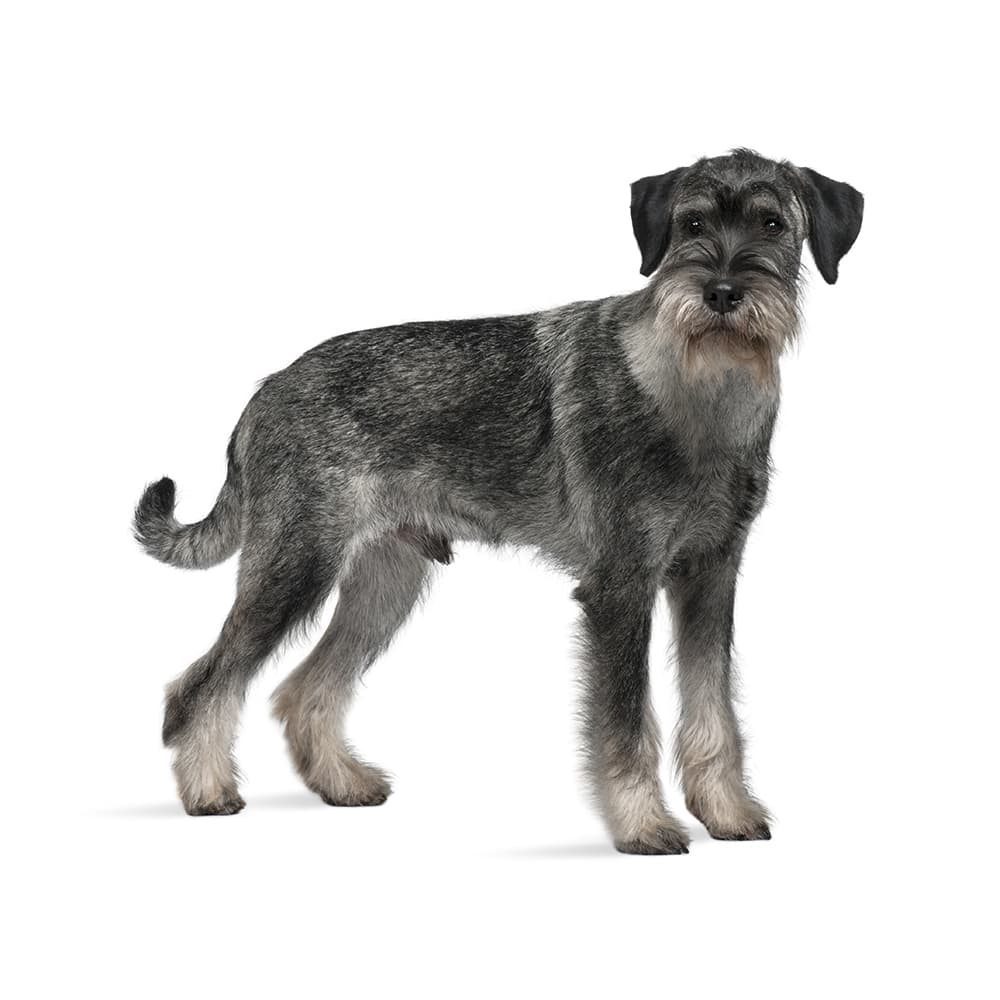Discover your dog's connection to this breed and 200+ others


Discover your dog's connection to this breed and 200+ others



The Standard Schnauzer is a robust, squarely built, medium-sized dog with a distinctive bearded snout, known for its ardent spirit, extroverted behavior, and strong guarding instincts. A member of the American Kennel Club (AKC) Working Group, it is one of three distinct Schnauzer breeds, alongside the Miniature and the Giant Schnauzer. The Standard Schnauzer, often simply referred to as the Schnauzer, originated in Germany in the late Middle Ages. Its name, Schnauzer, comes from the German word for snout and means colloquially mustache or whiskered snout, due to the dog's distinctively bearded snout. The breed was primarily used as versatile farm dogs in its early history. They served many purposes, such as herding livestock, protecting property, and even hunting vermin. Later, they were used as military dogs during World War I and II due to their intelligence and versatility.
Standard Schnauzers is a generally healthy breed, though they can suffer from persistent mullerian duct syndrome, myotonia congenita, degenerative myelopathy, and progressive rod-cone degeneration. They also have a predisposition to hip dysplasia, eye problems like cataracts and progressive retinal atrophy, and von Willebrand's Disease (a blood clotting disorder).
Standard Schnauzers are known for their intelligent, playful, and protective nature. They are often good with children and are known for their loyalty to their families. Due to their working background, they are energetic dogs that require regular exercise to keep them happy and healthy. They are typically good with other dogs and pets if properly socialized from an early age.
They are highly trainable but can have a stubborn streak, so consistent, positive reinforcement methods work best. Due to their protective nature, they can be wary of strangers, so early socialization is crucial.
A canine genetic lineage is a group of individuals or entire breeds that descended from common ancestors predating modern breed formation. Often these lineages are associated with a ‘type’ of dog with a unique historical working role and associated behaviors (e.g., herding, scent hunting, etc.).
Spitz and Sled Dogs originate in the Arctic and subarctic regions which caused them the develop adaptations to cold climates. Some of these adaptations give rise to characteristics of the lineage, most notably a dense double coat that helps with insulation. The lineage of these dogs can be followed back to ancient breeds developed by Indigenous people. These ancient breeds were used as an aid for transportation, herding, guarding, and hunting. These jobs have created dogs that are independent, intelligent and have strong work ethics as well as a sturdy body that helps them to pull sleds or go on long journeys over rough terrain.
Example breeds with ancestry from this lineage include Akita, Chow Chow, and Siberian Husky.
The Standard Schnauzer is the original prototype of the three Schnauzer breeds, which also include the Giant Schnauzer and the Miniature Schnauzer.
Standard Schnauzers were featured in several artworks during the 15th and 16th centuries, suggesting the breed's existence and appreciation during that time.
Albert Einstein famously owned a Standard Schnauzer named Chico.
They were used in Germany during wars as dispatch carries and Red Cross aides.
https://vgl.ucdavis.edu/breed/schnauzer-standard?page=1
https://www.akc.org/dog-breeds/standard-schnauzer/
https://www.ukcdogs.com/standard-schnauzer
https://www.fci.be/en/nomenclature/SCHNAUZER-182.html
Recommended by top vets with decades of experience
21 breeds
64 genetic health markers
50 genetic trait markers
